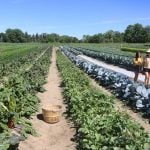Temple Grandin has a simple answer to the ongoing debate surrounding the ethics of horse slaughter in North America: do it, do it right and make it as transparent as possible.”I’m getting to the point where they (slaughter plants) should stream the video out to the Internet and let everybody watch it,” said , the well-known livestock expert. An animal rights group released videotape earlier this year depicting improper kill practices at horse slaughter plants in Fort Macleod, Alta. and Montreal, Que. The video showed horses struggling and kicking after plant employees failed to kill animals with the first shot.Grandin said such incidents of abuse could be mitigated if the plants made their practices more visible.”My feelings on slaughter houses is, and I don’t care what species it is, they should put a video camera in there and have it audited by an outside auditing company over the internet, the way Cargill has done with their beef and pork plants.”Grandin said horses can be killed humanely if slaughter plants follow three key steps:* There must be a non-slip floor in the stun box. * There should be solid sides on the stun box so the horse can’t see out.”And three, you’ve got to have two people – one to shoot and one to drive it in,” she said. “Because what you want to do is drive the horse in, get the door shut, bang.”See the Oct. 7 issue of the Western Producer for a more comprehensive transcript of Grandin’s comments on horse slaughter.
Grandin urges transparency in horse slaughter
Reading Time: < 1 minute









